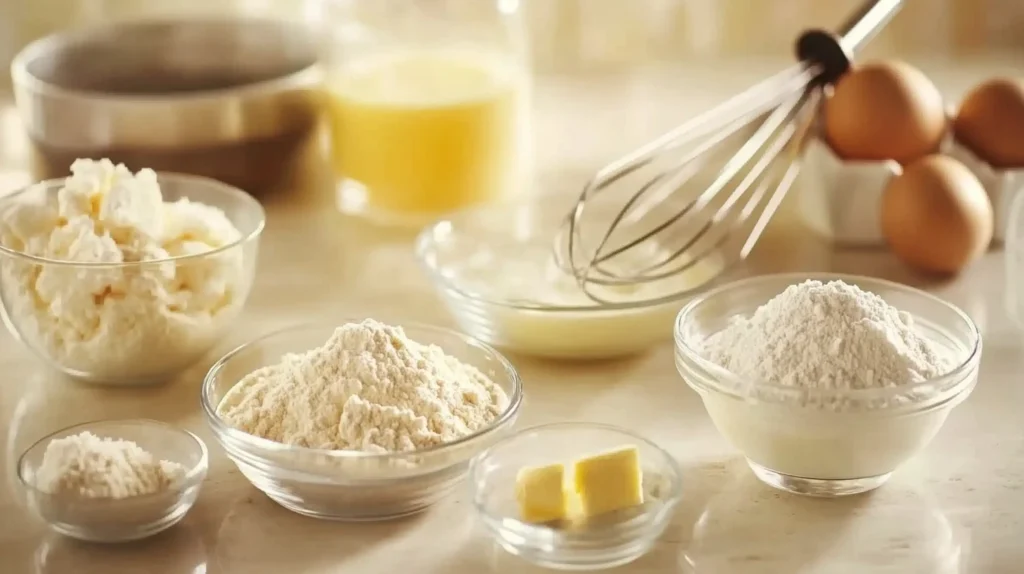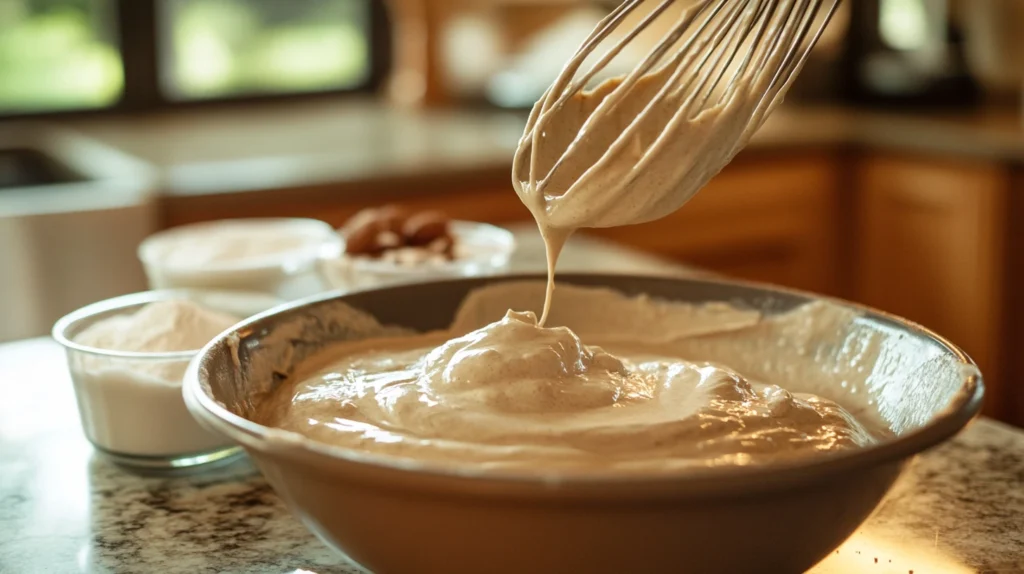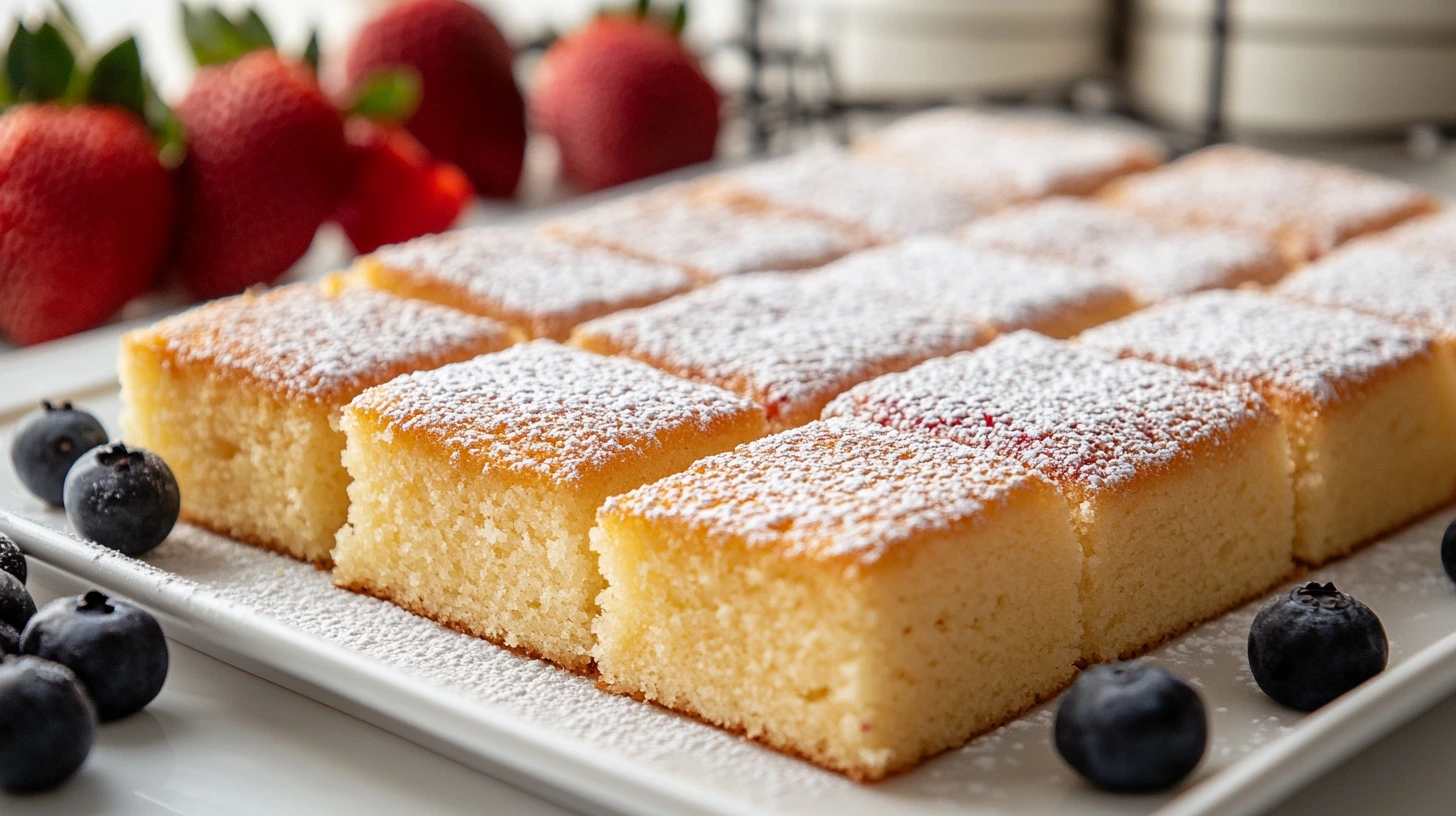Baking with kefir is a game-changer for anyone looking to create moist and flavorful cakes with minimal effort. This Kefir Sheet Cake combines the tangy, creamy qualities of kefir with a simple preparation process, making it the perfect dessert for any occasion. Its light and fluffy texture is ideal for casual gatherings, family dinners, or even as an afternoon snack.
Beyond its delicious taste, kefir offers valuable nutritional benefits. Packed with probiotics, vitamins, and calcium, kefir is a healthy and versatile ingredient. When combined with baking soda, it creates a tender crumb that ensures your cake turns out perfectly every time. Additionally, this recipe allows for customization with flavors like vanilla, lemon, or chocolate, making it a crowd-pleaser for any palate.
If you’re new to kefir, this recipe is a great way to explore its baking potential. To learn more about its health benefits and why it’s an excellent choice for recipes, check out this guide on kefir’s advantages. With its delightful taste and ease of preparation, this Kefir Sheet Cake is bound to become a staple in your dessert collection.
For even more dessert ideas, try pairing this cake with our Strawberry Cheesecake Recipe. The rich and creamy cheesecake pairs beautifully with the tangy notes of the Kefir Sheet Cake, creating a perfect duo for your next gathering. Together, these recipes are sure to impress your guests and have them asking for seconds.
Ingredients and Required Equipment for “Kefir Sheet Cake”
Ingredients
- 2 cups all-purpose flour: Provides structure to the cake. For example, use gluten-free flour for a gluten-free version.
- 1 cup sugar: Sweetens the cake and balances kefir’s tanginess.
- 1 tsp baking soda: Reacts with kefir to create a fluffy texture.
- 2 large eggs: Adds richness and stability to the batter.
- 1 cup kefir (plain): The key ingredient for moisture and flavor. Substitute with buttermilk or plain yogurt if needed.
- 1/2 cup melted butter or vegetable oil: Adds richness and ensures a tender crumb.
- 1 tsp vanilla extract: Enhances flavor.
Equipment
- Mixing bowls: For combining wet and dry ingredients separately.
- Whisk or electric mixer: To achieve a smooth batter.
- 9×13-inch baking pan: Ideal for even baking.
- Spatula: Helps scrape down the sides of the bowl for thorough mixing.
Additionally, choosing the right baking pan is crucial for a perfect cake. Check out this guide on selecting the best baking pans to make an informed decision. With these ingredients and tools, you’re ready to create a moist and fluffy Kefir Sheet Cake that’s sure to impress.

Step-by-Step Guide for Making “Kefir Sheet Cake”
Step 1: Preheat and Prepare
To start, preheat your oven to 350°F (175°C). While the oven heats up, grease a 9×13-inch baking pan with butter or cooking spray. This ensures the cake doesn’t stick and bakes evenly. Moreover, greasing the pan thoroughly will make it easier to remove the cake later.
Step 2: Mix Dry Ingredients
Meanwhile, in a large mixing bowl, whisk together the flour, sugar, and baking soda. Mixing the dry ingredients separately helps distribute the leavening agent evenly, resulting in a well-risen cake. Additionally, sifting the dry ingredients beforehand can help avoid lumps in the batter.
Step 3: Combine Wet Ingredients
Next, in another bowl, whisk the kefir, eggs, melted butter, and vanilla extract until the mixture is smooth. However, make sure the butter isn’t too hot, as it might scramble the eggs. Instead, let the butter cool slightly before adding it to the mix.
Step 4: Incorporate Wet and Dry Mixtures
Now, gradually add the wet ingredients to the dry mixture. As you do this, whisk gently to avoid overmixing. For instance, mix until the ingredients are just combined. Overmixing can lead to a dense texture, which is the opposite of the desired fluffy crumb.
Step 5: Pour and Bake
Then, pour the batter into the prepared pan and spread it evenly with a spatula. Place the pan in the preheated oven and bake for 25–30 minutes. Remember to check for doneness by inserting a toothpick into the center of the cake; it should come out clean. Furthermore, avoid opening the oven door frequently, as this can cause the cake to sink.
Step 6: Cool and Serve
Finally, allow the cake to cool in the pan for 10 minutes. After that, transfer it to a wire rack to cool completely. This step ensures the cake maintains its structure and doesn’t break apart. For more tips, explore Baking Tips for Beginners to perfect your technique.
By following these steps, you’ll achieve a moist, fluffy Kefir Sheet Cake that’s perfect for any occasion.

Tips and Tricks for Perfecting Kefir Sheet Cake
Making a Kefir Sheet Cake that is fluffy, moist, and flavorful requires a few key techniques.
1. Achieving a Fluffy Texture
The reaction between kefir and baking soda is essential for creating a light, airy cake. However, overmixing the batter can ruin this reaction, resulting in a dense texture. For instance, gently fold the wet and dry ingredients together until just combined. Avoid over-stirring, as it can overdevelop the gluten in the flour, leading to toughness.
2. Preventing Overbaking
Overbaking can dry out your cake and diminish its delicate crumb. On the other hand, underbaking leaves the center raw. Set your oven to 350°F (175°C) and use an oven thermometer to ensure accurate temperature. Begin checking for doneness with a toothpick inserted into the center of the cake at the 25-minute mark. Remove the cake when the toothpick comes out clean.
3. Exploring Flavor Variations
Kefir’s tangy flavor pairs well with various enhancements. For instance, adding 1–2 teaspoons of vanilla extract complements the tang with a subtle sweetness. Citrus zest, such as lemon or orange, brightens the flavor profile and makes the cake ideal for spring or summer occasions. A dash of cinnamon or nutmeg also works well for a warm, spiced variation.
By following these tips, you’ll create a tender, flavorful Kefir Sheet Cake that’s sure to impress.
Serving and Garnishing Kefir Sheet Cake
The versatility of Kefir Sheet Cake means it can be served in countless ways to suit any occasion.
- Toppings to Enhance Flavor
Powdered sugar is a classic, no-fuss topping that adds a touch of sweetness and elegance. Similarly, a light glaze made with powdered sugar and milk or lemon juice can provide a refreshing finish. For a richer option, whipped cream or a dollop of cream cheese frosting beautifully complements the cake’s tangy undertones. - Creative Serving Ideas
For casual gatherings, cut the cake into mini squares for easy, bite-sized servings. Similarly, pairing the cake with fresh berries like strawberries, raspberries, or blueberries can elevate its presentation and flavor. For an indulgent treat, serve it alongside vanilla ice cream or layer slices with jam and whipped cream to create a trifle.
To summarize, whether you’re hosting a party or enjoying a quiet afternoon treat, Kefir Sheet Cake can be customized with toppings and serving styles to suit any occasion. For more creative ideas, explore our Peach Cobbler Egg Rolls Recipe for inspiration on unique toppings and presentation tips. Adding a garnish like shredded coconut or a dusting of powdered sugar can transform this cake into an elegant centerpiece for any dessert table.
Common Mistakes to Avoid When Preparing Kefir Sheet Cake
Even simple recipes like Kefir Sheet Cake can encounter pitfalls if not executed carefully. Here are common mistakes and how to avoid them.
1. Overmixing the Batter
Overmixing the batter activates the gluten in the flour, resulting in a dense cake. Instead, mix wet and dry ingredients until just combined, leaving a few small lumps if necessary.
2. Improper Oven Temperature
An oven that’s too hot can burn the cake’s edges while leaving the center undercooked. On the other hand, a cooler oven may prolong baking time, drying out the cake. Use an oven thermometer to verify the temperature and avoid opening the oven door frequently during baking.
3. Choosing the Wrong Type of Kefir
Using flavored or sweetened kefir can alter the cake’s flavor and sweetness. Always opt for plain, unsweetened kefir to maintain balance. If kefir isn’t available, substitute it with buttermilk or plain yogurt, though these alternatives may slightly alter the texture.
For additional baking advice, refer to this troubleshooting guide for common baking mistakes.
By understanding and addressing these challenges, you can ensure your Kefir Sheet Cake turns out moist, fluffy, and delicious every time.
FAQ Section
Can I make this cake dairy-free?
Yes, you can make Kefir Sheet Cake dairy-free with substitutions. For example, replace kefir with a non-dairy alternative like almond or coconut milk combined with a tablespoon of lemon juice or apple cider vinegar to mimic kefir’s tanginess. Use plant-based butter or oil instead of dairy butter for the same moist texture.
How should I store Kefir Sheet Cake?
To maintain freshness, store the cake in an airtight container at room temperature for up to two days. If you live in a warm climate or want to keep it longer, refrigerate it for up to a week. Thus, refrigerating not only preserves the cake but also enhances its flavor over time. Before serving, allow the cake to return to room temperature for the best texture and taste.
What flavors pair well with kefir-based cakes?
Kefir’s tangy profile complements a variety of flavors. For instance, citrus zest (like lemon or orange) enhances its brightness, while vanilla adds a subtle sweetness. Consequently, toppings like fresh berries, whipped cream, or chocolate glaze pair beautifully with kefir-based cakes, making them versatile for any occasion.
In conclusion, Kefir Sheet Cake is a testament to how a simple ingredient like kefir can transform baking. Its tangy flavor and ability to create a moist, fluffy texture make it a standout option for dessert enthusiasts and home bakers alike. Moreover, the recipe is straightforward and adaptable, perfect for both seasoned bakers and beginners.
All things considered, kefir’s versatility allows for endless customization. Add citrus zest for a fresh twist, incorporate cocoa powder for a chocolatey version, or experiment with spices like cinnamon or cardamom for a warm, comforting flavor. These variations make Kefir Sheet Cake suitable for casual family dinners, elegant gatherings, or just a sweet treat to enjoy with tea.
Finally, we encourage you to try this recipe and discover the magic of baking with kefir. Whether you stick to the classic version or put your own spin on it, the results are sure to be delicious. Don’t forget to share your experiences and favorite variations in the comments below! For more tips on How to Use Kefir in Cooking to expand your culinary skills.
This cake is not just a dessert—it’s a celebration of flavor, simplicity, and creativity in baking!




